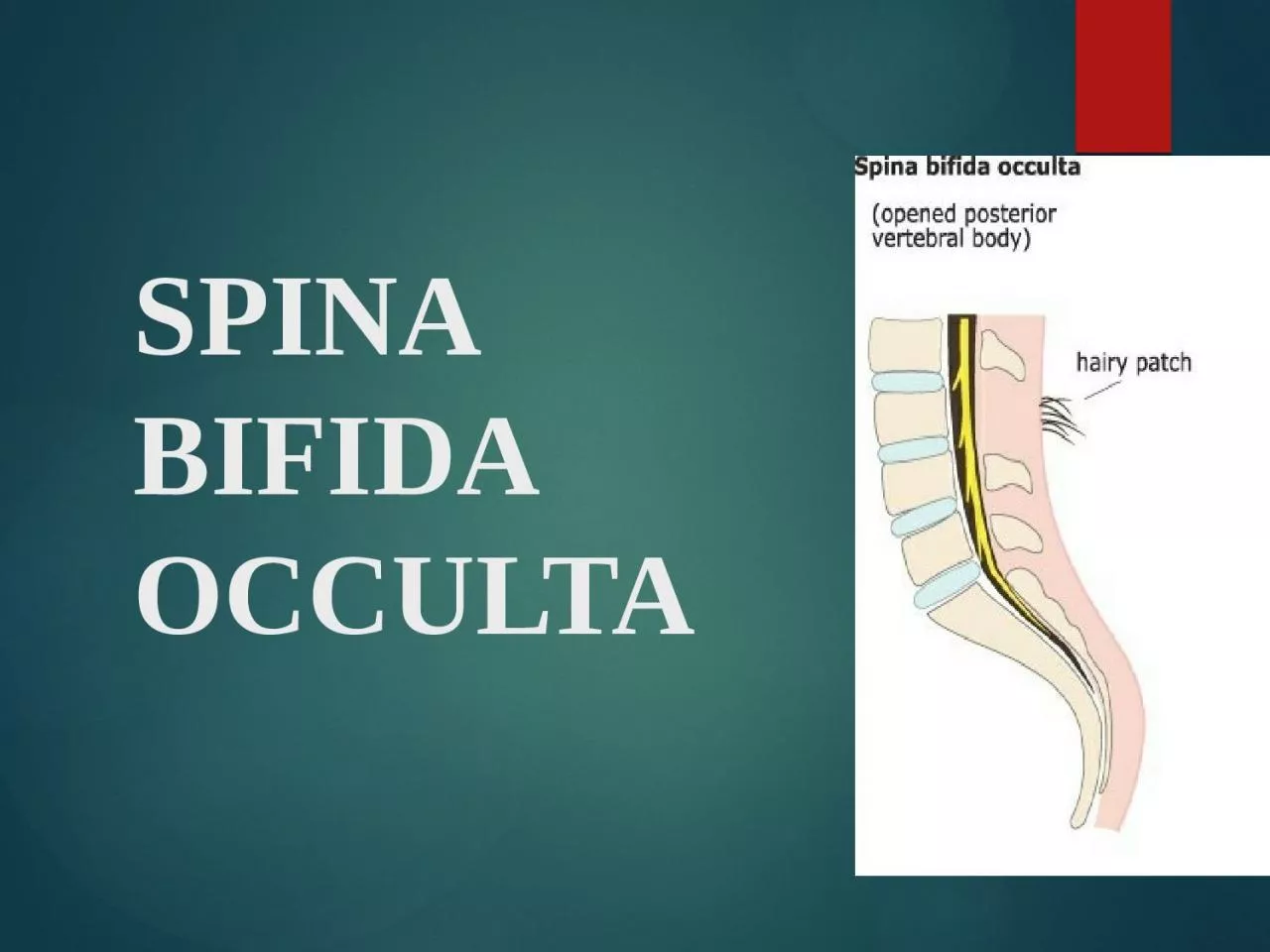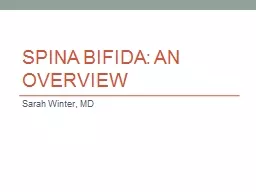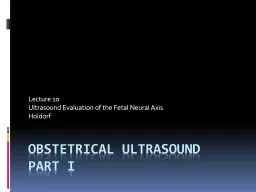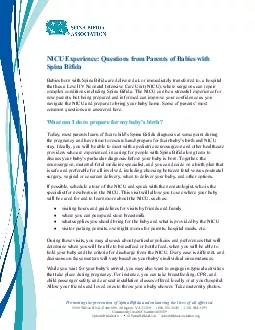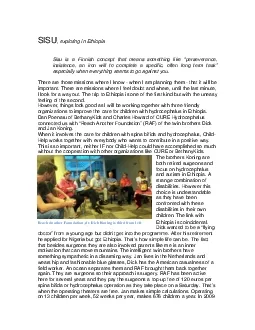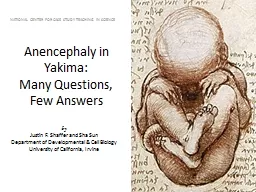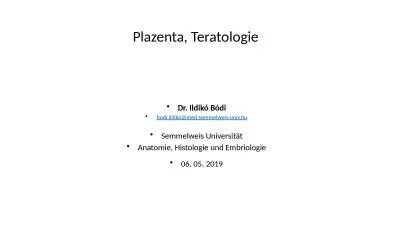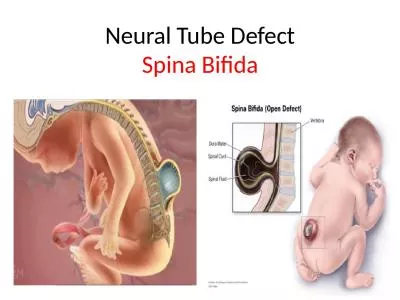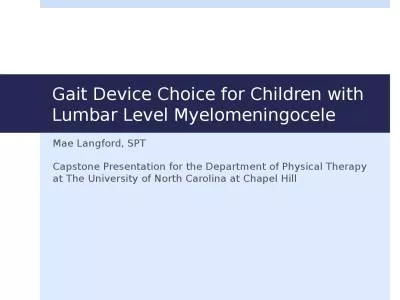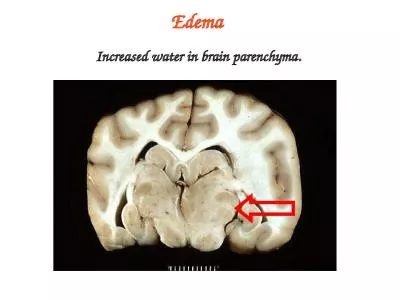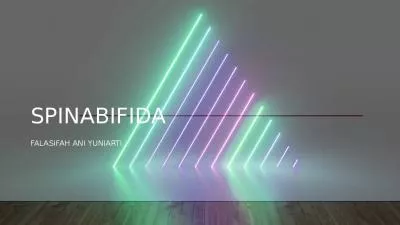PPT-SPINA BIFIDA OCCULTA SPINA BIFIDA OCCULTA
Author : anastasia | Published Date : 2022-06-18
Spina Latin Spine Bifida Latin Split Occulta Latin Hidden Spina Bifida in general is defined as a neural tube defect NDT that results when the inferior neuropore
Presentation Embed Code
Download Presentation
Download Presentation The PPT/PDF document "SPINA BIFIDA OCCULTA SPINA BIFIDA OCCULT..." is the property of its rightful owner. Permission is granted to download and print the materials on this website for personal, non-commercial use only, and to display it on your personal computer provided you do not modify the materials and that you retain all copyright notices contained in the materials. By downloading content from our website, you accept the terms of this agreement.
SPINA BIFIDA OCCULTA SPINA BIFIDA OCCULTA: Transcript
Download Rules Of Document
"SPINA BIFIDA OCCULTA SPINA BIFIDA OCCULTA"The content belongs to its owner. You may download and print it for personal use, without modification, and keep all copyright notices. By downloading, you agree to these terms.
Related Documents

